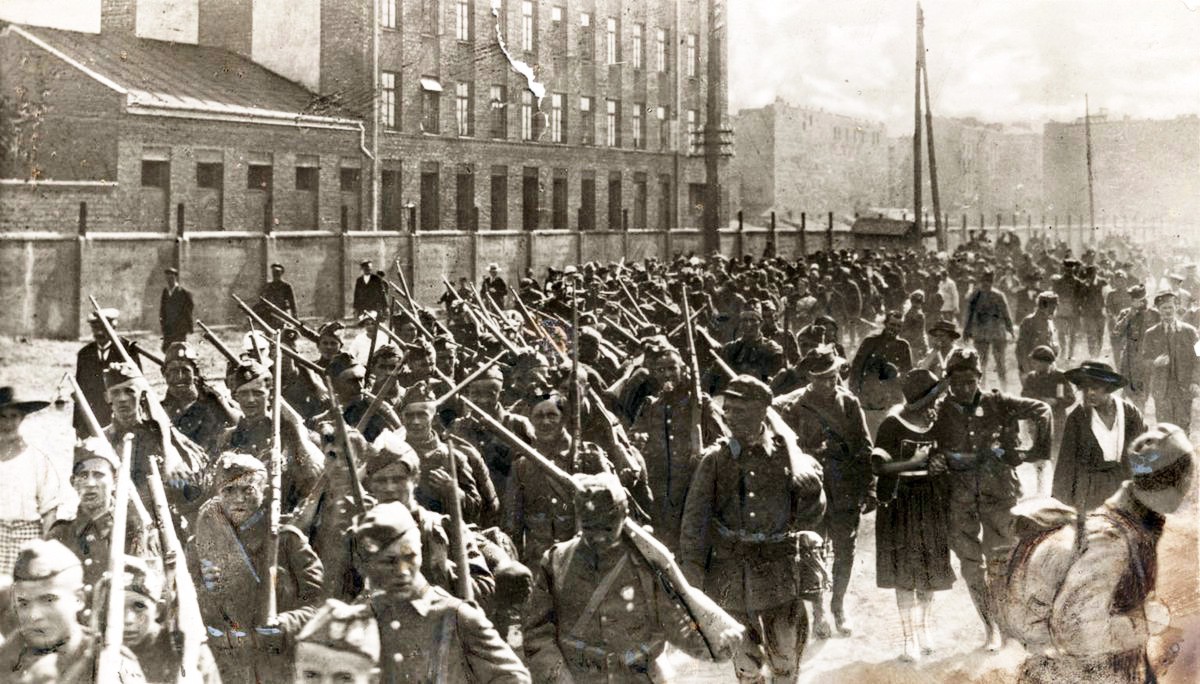The end of World War I was greeted with relief throughout Europe, but in most countries this was accompanied by profound disillusionment with the political and social establishment which had brought it about. Such feelings led to revolution in Russia, Germany and Austria, and violent unrest in France, Great Britain, Italy and elsewhere as many questioned the basis of existing institutions and looked to alternatives for a better future. Economic dislocation following the end of hostilities intensified the yearning for radical solutions, and, viewed from a distance with the spectacles of hope, the example set by the Bolsheviks in Russia held wide appeal. Not so in Poland.
by Adam Zamoyski
More than a century earlier, the 800-year old Polish state had been destroyed, its lands partitioned by Russia, Prussia and Austria. Despite several attempts to regain their independence, Poles remained in a state of captivity until November 1918, and the final collapse of the three empires that had carved up their country. On the day the armistice ending the war was signed in the West, the rebirth of the Polish Republic was proclaimed in Warsaw. But a question remained whether it could survive infancy.
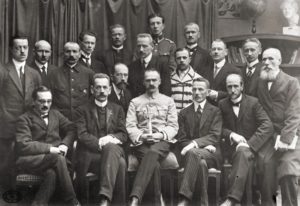
The Polish state which had been dismembered at the end of the eighteenth century had covered a vast area between Germany and Russia, and been inhabited by diverse ethnic groups. How much of it should be included in the new Poland was a matter of debate; the Lithuanians and the Ukrainians also wanted independent statehood, while neither Russia nor Germany were willing to give up territory they considered to be theirs. As the front had swept back and forth over it for four years, the devastation had been catastrophic. There were several currencies, no economy, little food, a typhus epidemic and no institutions to do anything about any of it. But there was profound joy at the recovery of independence and boundless hope for the future. While the rest of Europe questioned the validity of existing state structures, the Poles began building their own with enthusiasm. A constitution was drawn up and elections were held within months, while everything from a legal system to education and healthcare were created from scratch.
One area which reveals in microcosm the difficulties involved was defense. In 1914, the male population had been drafted into three different armies. Not only did each of these have its own identity, structures and operational methods, not to mention language and weaponry, they had also spent the past four years fighting each other. There was also a fourth ‘army’; Polish Legions which had fought alongside the Austrians , been disbanded in 1916, re-formed and then morphed into an underground military organization. Poland thus inherited a number of incompatible former Russian, German and Austrian units, and fundamentally subversive but highly motivated Legionary formations, as well as a pool of soldiers from one or other of the three imperial armies. These were joined in 1919 by the French-uniformed “Blue Army”, consisting of American and Canadian Poles and Polish prisoners of war from the German and Austrian armies on the Western Front. Their armament was equally varied, and supplying each unit with the correct ammunition constituted a major headache.
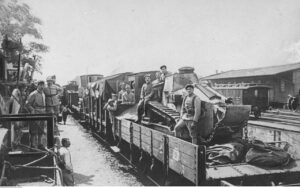
Yet most of the men were volunteers fired by a determination to put their country back on the map and to keep it there. Nor was there much time to dwell on practical shortcomings. The immediate necessity was to disarm the German troops still occupying most of the area and take control of provinces such as Silesia and Poznania which had been incorporated into the German Empire. Other priorities were to capture the historically Polish cities of Lwów, occupied by Ukrainian units of the Austrian army, and Wilno, taken over by Lithuanian nationalists. And since there were no defined borders, there were armed clashes at every point on the perimeter, particularly in the east.
Although the Bolsheviks who had taken power in Russia had disowned the eighteenth-century partitions of Poland, they had no intention of relinquishing control of the area seized by the Tsars. More ominously, they believed in spreading their revolution throughout Europe. The circumstances were propitious, with workers’ movements threatening the status quo in every country, and soldiers so war-weary as to be unlikely to defend it. To the south-east, the Bolsheviks had occupied most of Ukraine, and to the north swept westwards into what is now Lithuania and Belarus, and kept going until they were stopped by Polish forces early in 1919.
With civil war raging in Russia between the Bolsheviks and the “Whites” who were trying to topple them, the Polish army was able to push the Soviet forces back and occupy much of this once Polish territory. But having defeated the Whites by the end of 1919, Lenin began massing troops and on 14 February 1920 took the decision to attack Poland.
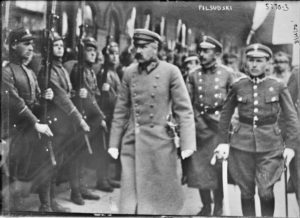
The operation, scheduled for April, involved an offensive aimed at Warsaw and supported by a simultaneous thrust from Ukraine, but there were delays in concentrating his troops, and the Polish commander-in-chief and head of state, Józef Piłsudski, decided to pre-empt him. He signed an alliance with the Ukrainian leader Ataman Symon Petlura, intending to help him expel the Russians from Ukraine and set up an independent state allied to Poland, which would shorten Poland’s frontier with Russia by more than half. On 25 April combined Polish-Ukrainian forces invaded Ukraine, routed the Russians and on 7 May marched into Kiev.
This was to have disastrous consequences. Ukraine had been bled by six years of warfare, its civil society destroyed by a succession of Tsarist, Austrian, German, Bolshevik, White Russian and a variety of Ukrainian regimes. Petlura did not manage to inspire the necessary confidence or raise more than 30,000 men, so Piłsudski had to devote troops needed elsewhere to the defense of Ukraine.
To most Russians, Ukraine was an integral part of their country, and Lenin was able to represent the capture of Kiev as an attack on the Russian motherland, which yielded political support and a wave of volunteers. Worse still, Poland’s Western allies also believed Ukraine to be part of Russia, and saw Piłsudski’s action as imperialist adventurism. In London, a “Hands Off Russia” committee called for sanctions against Poland while dockers refused to load shipments of arms purchased by the Polish government. The Communist International in Moscow called on transport workers in every country to blockade Poland.
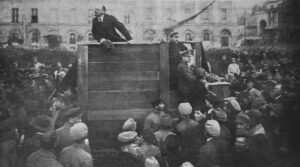
On 14 May, a week after the Polish-Ukrainian capture of Kiev, the Russian armies of the Western Front under Mikhail Nikolayevich Tukhachevsky launched an offensive against Poland. After some initial successes it was checked, and by the beginning of June the Russian forces had been thrown back across the river Berezina. But by then the situation in Ukraine was deteriorating. Russian units in the area had been reinforced and given a powerful boost by the arrival of the First Cavalry Army, the KonArmia, consisting of nearly 20,000 horsemen commanded by the swashbuckling Semion Mikhailovich Budyonny.
On 5 June, Budyonny broke through the Polish lines and charged into the rear of the Polish forces holding Kiev, precipitating a general retreat. By the end of June, the Poles were back where they had started on 25 April. They had lost men and equipment, but the real damage was to morale. Forged in the barbarous conditions of civil war, the Red Army wreaked political revenge on its enemies, and prisoners could expect little mercy. With the KonArmia rampaging in their rear, retreating Polish units came across the mutilated corpses of brothers in arms, particularly officers, as well as civilians.
Pilsudski withdrew troops from the northern sector to reinforce the new line of defense against the KonArmia,but on 2 July, Budyonny broke through once more, forcing the Poles back another hundred kilometres. On 4 July, after issuing a proclamation telling his troops that they were to bring about “World Revolution” by marching over “the corpse of Poland”, Tukhachevsky struck again. With an army now mustering some 120,000 men and including an elite cavalry corps, KonKorpus, he had an almost twofold superiority over the Polish forces facing him under General Szeptycki. He was expected to take Warsaw by 12 August and then continue his advance into Germany, where post-war discontent could be whipped up into revolution.
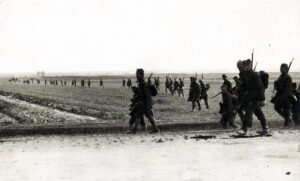
The Polish forces could not sustain the pressure of the Russian attack and retreated to a line of defenses further back, but by the time they reached these, on 12 July, the KonKorpus had outflanked them, forcing them to retreat further. Szeptycki attempted to mount a flank attack on the extended Russian spearheads, but the KonKorpus once again outflanked his left wing at Grodno on 19 July. With Tukhachevsky’s other army groups pressing on relentlessly, the Polish forces pulled back to the next line of defense, the rivers Bug and Narew.
The deteriorating situation caused alarm in Warsaw, and a Government of National Defense was formed under the leader of the People’s Party, Wincenty Witos. This issued an appeal for help to Britain and France, which despatched a joint mission of assorted politicians and generals, and a telegram to Moscow suggesting peace talks. It became clear that Poland was on her own. Sensing this, Lenin ordered the speeding up of the offensive.
Piłsudski replaced Szeptycki with the commander of the “Blue Army”, General Józef Haller, with instructions to hold on at all costs while he made a concerted attempt to defeat Budyonny. The KonArmia had been weakened by its lightning advance and had got bogged down in heavy fighting as it advanced on the town of Brody. But just as it was about to be dealt a death blow by a reinforced Polish cavalry division, it was ordered to break off and withdraw. The previous night, 1 August, Tukhachevsky’s forces had captured Brześć and crossed the Bug, breaching the last natural defense before Warsaw. The whole Polish front reeled back.
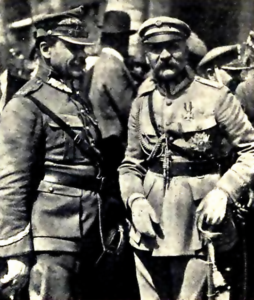
Tukhachevsky had by now advanced some 600 kilometers. He had not won a single battle, but he had brilliantly deployed the Red Army’s principal strength, acquired in the Russian civil war – its ability to sow uncertainty and panic by projecting the mystique of an unstoppable and unforgiving horde. “This incessant wormlike movement by large numbers of enemy troops, punctuated now and again by a sudden leap forward, a movement continuing for weeks on end, gave the impression of something irresistible rolling on like some heavy, monstrous cloud,” recalled Pilsudski, adding that it reduced the Polish staff to impotence, since every time they set out a new plan or issued orders, they found the situation had made them irrelevant.
The effect on the troops was devastating. The long retreat in the July heat took its toll physically on the men and their equipment, with worn out boots causing lameness and poor victualing leading to colic and diarrhea. The psychological strain proved too great for many and fear of falling into the merciless hands of the Bolsheviks made them abandon positions and flee at the slightest rumor of encirclement. The possibility of rallying these men and giving them back their fighting spirit seemed remote.
Panic began to spread through the Polish capital. Many feared the fragile structures of the new state were about to collapse, that landless peasants and members of the urban proletariat would be swayed by Bolshevik propaganda to join communist sympathizers in overthrowing it. On 23 July, Lenin created a Polish Revolutionary Committee, PolRevKom, in effect a Bolshevik government for Poland. Leaflets calling for world revolution were printed in German in preparation for the onward march. On the same day he wrote to Stalin suggesting a thrust spearheaded by Budyonny through Romania and Hungary to spur Italian communists to revolution. Governments, the press and public opinion in western Europe more or less gave up on Poland and foreign embassies began packing up and leaving Warsaw. The country faced a huge crisis of confidence, an existential threat, and Pilsudski saw this “internal front” as “the most dangerous front of all”.
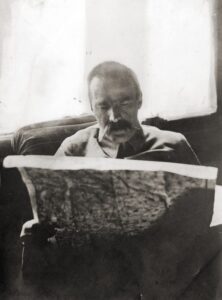
He realized that only a radical plan could galvanize the troops and break the psychosis of retreat. He also suspected that Tukhachevsky’s breathless advance must have taken its toll on his troops and that, with their supply lines stretched to breaking point, they would be vulnerable to a determined attack. Moreover, Tukhachevsky had moved so far and so fast, that he had left the Russian armies operating in the south far behind, thereby leaving his left flank dangerously exposed.
Pilsudski decided to buy time with space, transferring the decisive battle to the gates of Warsaw, whose hurriedly strengthened defense would, he hoped, draw the main Russian attack. He created a new army group to the north of the city to prevent the KonKorpus crossing the Vistula and attacking it from the west. Meanwhile, like a matador stepping aside from the path of a charging bull, he disengaged some of the steadiest divisions from the front and moved them south. There, along the line of the river Wieprz, he put together a strike-force with which to cut across the flank and rear of Tukhachevsky’s front.
There were three elements crucial to the plan’s success. The first, and most important, was that the troops defending Warsaw and those blocking the advance of the northernmost units on the Russian right wing needed to hold out. The second was that Tukhachevsky must not be allowed to get wind of Pilsudski’s intentions. The third was that the troops of the strike-force must be imbued with offensive spirit.
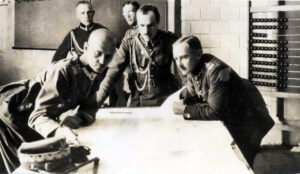
He had been working hard during the past three weeks to build up reserves and amass supplies. His call for volunteers had yielded 164,615 men and women, 30,000 of whom were formed into a Volunteer Division and the rest into platoons which were fed into existing units. As they represented a wide social spectrum, including members of parliament, teachers, scouts, workers and peasants all determined to defend their country’s new-found independence, their arrival acted as a tonic on morale. Reviewing his strike-force on arriving to take command of it on 12 August, he noted that many of the men marched past barefoot and resembled “a collection of tramps”, but their morale was high.
The same day, the Russians began probing the Polish positions before Warsaw. The city was well defended, with plenty of troops, heavy artillery, tanks and even planes, yet a vigorous attack by the Russians on 13 August sent one Polish division fleeing in terror. The Polish army groups covering the area to the north of the city, under General Władysław Sikorski, stood firm, but they were heavily outnumbered, and had already been outflanked by the KonKorpus. The next day, another attack on the Warsaw defenses came perilously close to success, while Sikorski’s forces to the north were encircled.
The following morning, 15 August, the Russians tried to press home their attack on all sectors, and met with considerable success. The PolRevKom moved closer so as to be ready to enter Warsaw and establish Soviet rule. But sometime that afternoon a new spirit seemed to enter the Polish ranks and at least one Russian commander, Vitovt Putna of the 27th Omsk Rifle Division, noted a change of mood in his men. Having failed to sweep into Warsaw on the tail of a panicked Polish army, Tukhachevsky’s army had lost its principal weapon – the ability to instill terror.
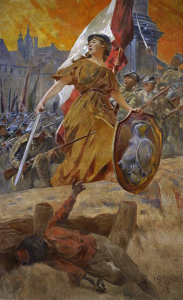
Early on the morning of 16 August, Piłsudski launched his counter-stroke: three infantry divisions numbering 27,500 infantry and 950 cavalry under his personal command surged forward in a northerly direction, while to their right two more divisions, under General Śmigły-Rydz, numbering 25,000 infantry and nearly 3,000 cavalry, moved out in a north-easterly direction. The five divisions were to move fast and act independently; Piłsudski was thrusting a five-pronged pitch-fork into the side and rear of all the Russian troops operating against Warsaw.
As they came under surprise attack from the flank or rear, Russian units either disintegrated or retreated an easterly direction. But they soon found their road cut by successive prongs of Piłsudski’s strike-force, and those which had advanced furthest to the west now had to fight through multiple Polish forces cutting across their path. Several, including the KonKorpus, opted to cross the border into German territory in East Prussia rather than face capture by the Poles. By 25 August, when the easternmost of Piłsudski’s prongs had reached the East Prussian border, Tukhachevsky’s front had ceased to exist.
It was an extraordinary reversal of fortune, and a stunning victory. Tukhachevsky had lost well over 100,000 men to death and capture, as well as most of his artillery and equipment. More to the point, whole army units such as the KonKorpus and at least four infantry divisions had annihilated themselves by choosing internment in East Prussia. The Russian forces operating to the south, including the KonArmia, barely managed to escape from an encirclement in which they lost their cohesion as a fighting force.
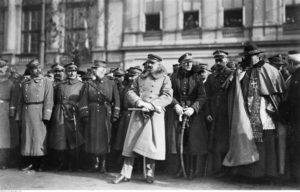
Heavily reinforced with fresh troops from the Russian interior, at the beginning of September Tukhachevsky would make a stand along the river Niemen. But after fierce fighting between 21 and 28 September he was in full retreat once more and by the first days of October the Poles were back where they had been in the spring. They were halted only by a ceasefire which came into effect on 16 October, the Soviets having agreed to negotiations.
There was much debate as to whom the victory should be attributed, but there can be no doubt that it was achieved through Piłsudski’s plan and his leadership, the steadfast competence of generals such as Sikorski and the patriotic instincts of the Polish soldiers, all of it backed up by a great national surge of people of all classes and both sexes who came forward in multiple ways to rescue the reborn state and the civilization they believed in. There can also be no doubt that had Tukhachevsky not been stopped at Warsaw the appearance of Bolshevik troops in Germany would have had seismic consequences, including the annulment of the Versailles settlement and very possibly the sovietization of large parts of Europe.
Author: Adam Zamoyski – Polish-British historian and author of best-sellers, including his history of Poland, The Polish Way (1987), and his account of Napoleon’s invasion of Russia, Moscow 1812: Napoleon’s Fatal March on Moscow(2004).

